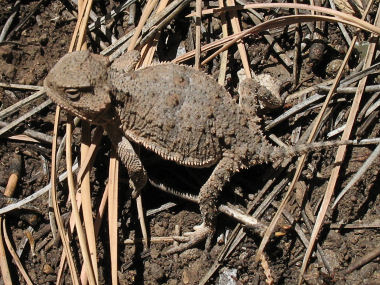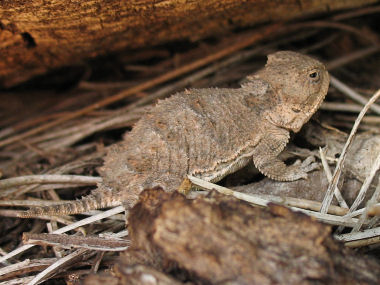There are 10 species of horned lizards
that exist in the Sonoran Desert and they can be found in a diverse
array of habitats from sea level through 11,000 ft. Horned lizards feed
on insects,
 though
some are very specialized, feeding only on ants using a long sticky
tongue. Most species of horned lizards lay eggs between May and August,
with clutches ranging from 3 to 45 depending on the species (though at
least one species gives birth to live young). though
some are very specialized, feeding only on ants using a long sticky
tongue. Most species of horned lizards lay eggs between May and August,
with clutches ranging from 3 to 45 depending on the species (though at
least one species gives birth to live young).
|
Some horned lizards are difficult
to distinguish from rocks (like this guy); thus they avoid detection by would-be
predators. |
The body form and armor of the horned lizard make it
somewhat slow, and non-maneuverable, but offer other competitive
advantages. Small animals, such as snakes, have more difficulty trying
to eat a wide, thorny lizard than it would a smooth, slender one. The
wide body also works well as a solar panel to capture the suns heat. In
response to an attack, some species can rupture small capillaries around
their eyes and squirt a bloody solution at the predators.
 |

